| View previous topic :: View next topic |
| Author |
Message |
bugrock
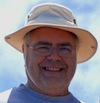
Joined: 24 Nov 2008
Posts: 137
Location: Michigan


|
 Posted: Jan 13, 2010 19:44 Post subject: Display cabinets Posted: Jan 13, 2010 19:44 Post subject: Display cabinets |
|
|
Gail,
When you have the time I would appreciate learning more about the display cabinets
shown in your photos. Are they available commercially or were they custom made?
Were the lights placed by the manufacturer or custom installed? What type of lights
and bulbs? Is this design relatively dust free?
In particular I am looking for information on display lights (fixtures, bulbs, best color of light for mineral displays etc).
Thanks
|
|
| Back to top |
|
 |
Gail

Joined: 21 Feb 2008
Posts: 5839
Location: Texas, Lone Star State.



|
 Posted: Jan 13, 2010 19:53 Post subject: Re: Display cabinets Posted: Jan 13, 2010 19:53 Post subject: Re: Display cabinets |
|
|
| bugrock wrote: | Gail,
When you have the time I would appreciate learning more about the display cabinets
shown in your photos. Are they available commercially or were they custom made?
Were the lights placed by the manufacturer or custom installed? What type of lights
and bulbs? Is this design relatively dust free?
In particular I am looking for information on display lights (fixtures, bulbs, best color of light for mineral displays etc).
Thanks |
Hello, we had the cabinets made by Keith Wiliams out of West Virginia. He made them, all 20 of them, to fit spots we had decided to have them put, including our book cases and t.v. cabinet. They are not dust free, then again..what is? The lights are halogen, they have other types now....but we are not unhappy with the ones we have. There are fans built into each cabinet also, and filters to attempt to keep things less dusty.
I clean my cabinets twice a year each.
Keith makes them out of quarter sawn oak.
Keith Williams will be at Tucson, and you can find his info on the web. our cabinets are furniture and will be cherished as such.
|
|
| Back to top |
|
 |
Bergur_E_Sigurdarson

Joined: 21 Dec 2017
Posts: 148
Location: Paipa, Colombia



|
 Posted: Jan 13, 2020 10:50 Post subject: Display cabinets... lighting Posted: Jan 13, 2020 10:50 Post subject: Display cabinets... lighting |
|
|
I'm looking to finally get a proper cabinet setup to display my minerals.
I've been looking for an antique or older cabinet to modify.
What I'm wondering about is the lights...
I did consider just adding LED-strips under each shelf as it's inexpensive and gives good light without being too obvious.
But I'm also very tempted by the LED-spotlights I've seen used in vendor cabinets at shows.
Seeing as there are options for differing light temp (°K) to suit each mineral/color
....so... invading this thread to ask what people can recommend in that.
Is there a particular maker that people know for quality and versatility in mounting?
I think I remember a dealer telling me about his cabinet having rails for mounting the spots, so he could adjust for each show.... anyone know the makers of those?
To be honest, I'm hoping I can get these for a low-ish price...
...looked quickly at amazon, aliexpress and a few more and it seems that they offer several for under $5 ...but often with limited info on the lights.
(I hope asking about this isn't a violation of forum rules, as it involves "business" :-P )
Thanks in advance :-)
Bergur
| Description: |
|
| Viewed: |
31155 Time(s) |
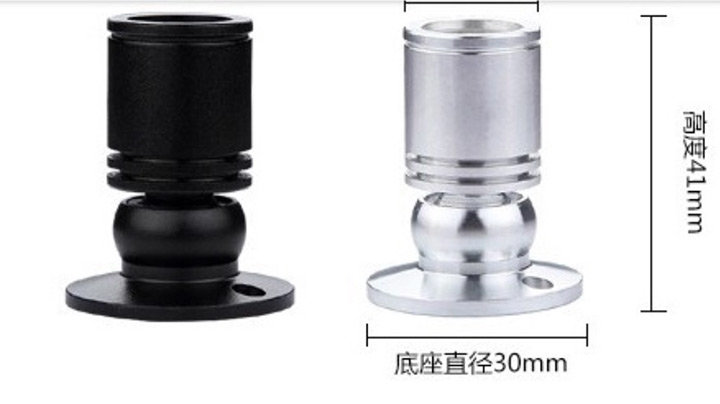
|
|
|
| Back to top |
|
 |
Jesse Fisher
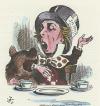
Joined: 18 Mar 2009
Posts: 639
Location: San Francisco



|
 Posted: Jan 13, 2020 11:53 Post subject: Re: Display cabinets Posted: Jan 13, 2020 11:53 Post subject: Re: Display cabinets |
|
|
My experience with LED lighting and minerals is that, no matter what the nominal "color temperature" of the particular LED, some minerals just do not react well to them. Fluorite is a notable example (along with dioptase, azurite, and a few others), especially the ones that are highly fluorescent, such as those from Northern England. My understanding is that this problem has to do with the fact that most LEDs, unlike incandescent lighting, do not emit a continuous spectrum, but tend to have a gap in the green region. Combining LEDs of different color temperatures does not seem to solve the problem.
Peter Megaw has spent some time looking into this for his own displays, and tells me that he has located someone who has developed an LED that solves this. I am not sure whether they are available on a commercial basis, however. Perhaps he can chime in on the issue.
|
|
| Back to top |
|
 |
Roy Starkey
Joined: 01 Feb 2014
Posts: 68
Location: Bromsgrove



|
 Posted: Jan 13, 2020 12:19 Post subject: Re: Display cabinets Posted: Jan 13, 2020 12:19 Post subject: Re: Display cabinets |
|
|
Hi Everyone
I fitted 'White' 5000K LED strips under the shelves of my display cabinets a few years ago and have been very pleased with them. The product I used was sourced from the late Paul Lowe in the UK and is manufactured (or was manufactured) by Self Electronics see:
http://www.self-electronics.com/uploads/LINCUS-L4-24V-BC%E8%AF%B4%E6%98%8E%E4%B9%A6.pdf
(link normalized by FMF)
The illumination is bright and gives excellent colour rendering of fluorite and everything else in my collection. Unfortunately it looks as if the product is now discontinued but it may be worth contacting Self and asking if they have a current equivalent.
Roy
| Jesse Fisher wrote: | My experience with LED lighting and minerals is that, no matter what the nominal "color temperature" of the particular LED, some minerals just do not react well to them. Fluorite is a notable example (along with dioptase, azurite, and a few others), especially the ones that are highly fluorescent, such as those from Northern England. My understanding is that this problem has to do with the fact that most LEDs, unlike incandescent lighting, do not emit a continuous spectrum, but tend to have a gap in the green region. Combining LEDs of different color temperatures does not seem to solve the problem.
Peter Megaw has spent some time looking into this for his own displays, and tells me that he has located someone who has developed an LED that solves this. I am not sure whether they are available on a commercial basis, however. Perhaps he can chime in on the issue. |
|
|
| Back to top |
|
 |
Bergur_E_Sigurdarson

Joined: 21 Dec 2017
Posts: 148
Location: Paipa, Colombia



|
 Posted: Jan 13, 2020 12:20 Post subject: Re: Display cabinets Posted: Jan 13, 2020 12:20 Post subject: Re: Display cabinets |
|
|
Thank you for your response, Jesse.
While I believe you, I have seen many purely LED lit cabinets by vendors, and the results were quite amazing even tho they included some of those minerals you mention.
In modyfying an older cabinet I was thinking that the LEDs would take up least space and also hopefully I could place them in such a manner as not to be very visible, if at all.
So... altho I would take advice on other types of lighting... I was principally wondering if there was a particular LED-spot favoured in displays... amongst that type :-)
|
|
| Back to top |
|
 |
SteveB
Joined: 12 Oct 2015
Posts: 239
Location: Canberra


|
 Posted: Jan 13, 2020 13:41 Post subject: Re: Display cabinets Posted: Jan 13, 2020 13:41 Post subject: Re: Display cabinets |
|
|
Led Strip lighting is cheap and easy to install which is what you’ll end up using.
However, Jesse is entirely correct and the most important response you’ve had which you will avoid as it means spending dollars.
Question: What are you trying to achieve? Are your specimens just a hobby? Is this meant to be a museum grade display where the subtleties of coloration is important?
Point one: whatever lights you look at on ebay, or in local hardware and lighting stores their “specs” are irrelevant and not useful for any application where color accuracy is important. You MUST visit the sites of the manufacturers and look for spectra reports on the model of the bulbs you are considering. What you really need are Full Spectrum Lighting solutions which are hard to find, but mostly scientific equipment suppliers are the best bet. Plus they will cost considerably more than seemingly equivalent bulbs yet are entirely worth the cost. Buying the more expensive lights from your hardware store will NOT be a good purchase over the cheaper ones. But I get the sense you are really only wanting permission to buy cheap ebay lighting. Sure, I use it, its not ideal but dead easy to install, I have a wood framed glass cabinet and ran the strip down the inner edge of the left wooden upright frame facing inward, then across the bottom front edge and up the right side with the remaining excess I squiggled across the top facing down. The cabinet has a mirror rear so I get a little glare in my eyes from there but otherwise its bright enough and even enough across everything in the cabinet. It has a dial too to adjust brightness which I glued out of sight around the side of the cabinet . Just plan and measure where you want the lighting to be and how you’ll run a continuous strip and just buy appropriate length on ebay. Remote control not much use and the kits come pre-wired so you can just plug into wall socket and turn on.
But to repeat it's a poor choice. Not only will colors not be well represented in your specimens with whatever lights you buy locally or ebay etc. ONLY full spectrum lighting will give accurate colors. There is also the question of color change of your specimens, as Jesse mentioned parts of the emission spectra of bulbs will have gaps typically to avoid parts of the spectra that are harmful to people at the infrared and ultraviolet ends of the spectra but to balance the missing parts to try to get a”white” light they use other elements to absorb other parts of the spectra too. So minerals colors which are highly dependent on the light spectra they are seen under won't be as good as they should under any artificial lighting you display them under. Think the better fluorites which look one color indoors (artificial light) and another when taken outside to view under sunlight (full spectrum).
The same applies to a UV display for fluorescent specimens. It's NOT as simple as longwave and shortwave UV bulbs, I have many specimens that react only with one specific SWUV bulb and differently under another and differently again under various LWUV. So for me I went for tubes I could use together and test my specimens to see which tubes gave the most dramatic reactions. Each tube will peak very very tightly at a certain wavelength. Cheap “party bulbs are really only covering blue with a little of UV, again ebay specs in particular lie a LOT with UV torches.. Plus a UV display is dangerous to your health if you are directly exposed to the bulb itself.
Spotlights are good for specific large specimens but not a general display, not only the color problems but the shadow/contrast problem. They provide nice specular highlights so if you have crystals and polished items or cut gems they provide that “glint” to make them sparkle. Also there is the technology of the bulbs themselves, cheap white led shave a blue dot in the middle of the light it projects, cree style lights are a chip construction covered in a lens so it projects a blocky grid pattern so getting even white light from them is problematic even more.
So back to my question of what you are trying to achieve. To do it right it’ll be expensive with specialty scientific supply lighting. Anything else regardless of cost will be wrong and possibly harmful to yourself and your specimens. So do it cheap since it’ll be wrong regardless just to save money. Plus I won't even touch on the properties of glass types and acrylics used in your display..
Go for led strip lighting to get a good diffuse shadow coverage inside the display and then look at some direction adjustable spots to highlight more sparkly specimens or add contrast across fossil surfaces etc. but not as primary lighting unless its a display of only huge specimens.
|
|
| Back to top |
|
 |
Bergur_E_Sigurdarson

Joined: 21 Dec 2017
Posts: 148
Location: Paipa, Colombia



|
 Posted: Jan 13, 2020 15:06 Post subject: Re: Display cabinets Posted: Jan 13, 2020 15:06 Post subject: Re: Display cabinets |
|
|
Thanks SteveB.
While I wasn't exactly looking for a justification for cheap solutions... I already knew I was going for LED-strips along the front for general light without much shadows.
Hoping to add a few spots on larger pieces possibly.
I was curious about the LED-spots I've seen from known dealers I remember seeing some awesome cabinets at Tucson and was hoping there was a main manufacturer of those lights that there was some concensus on being the best.
I was almost certain that those were expensive custom built solutions, but having seen a "rail" system, that allowed for placing the spots at different places and easier experimentation in spot-location before screwing in, like the one in the pic I posted.
I was hoping that even tho the cusom cabinets were expensive, one might find just the lights at a (more) reasonable price.
Current plan is for principally my own display. So... I might end up getting a few test-pieces that are those rather cheap ones from aliexpress.
I'm aware that they just come in two "official" Kelvin temps and neither would be anything close to a full spectrum... I've played around with energysaving bulbs that claim full daylight, whose design is for plants... and that was what I was using them for back in Iceland... to help with mid-winter darkness.
(But those being large bulky normal bulbs, they're absolutely nothing I would try and put in a cabinet for my minerals.)
I was thinking I would have the main LED-strip above-front for average light, and then either side where I have larger pieces, I could add 2-4 spots, testing which of the colour-temps of the two commonly sold (warm-white and cold-white) would be better or even combo if that were to come out better.
Even if I'm aiming to do a rather inexpensive setup, I'd still like to know if there is a known maker/brand that big dealers, museums etc. like :-)
|
|
| Back to top |
|
 |
Joseph DOliveira

Joined: 29 Jan 2012
Posts: 311
Location: Hanmer, Ontario



|
 Posted: Jan 13, 2020 15:48 Post subject: Re: Display cabinets Posted: Jan 13, 2020 15:48 Post subject: Re: Display cabinets |
|
|
As suggested in a previous comment, I use 5000K LED bulbs in my show displays. As of now, I haven't found anything that illuminates my specimens as well as this and it appears to work well for all types of specimens.
_________________
Joseph D'Oliveira
Hanmer, Ontario
Canada |
|
| Back to top |
|
 |
Roger Warin

Joined: 23 Jan 2013
Posts: 1233



|
 Posted: Jan 13, 2020 15:48 Post subject: Re: Display cabinets Posted: Jan 13, 2020 15:48 Post subject: Re: Display cabinets |
|
|
LED lamps.
Here are the colorized spectra of two types of LEDs and an incandescent lamp (2700 ° K).
The color shows better than the wavelengths, the type of light emitted.
But we see that the hot spot (2700 ° K) has a significant component at 451 nm.
These spots are sold by the piece at a reasonable price.
| Mineral: | Incandescent lamp |
| Description: |
|
| Viewed: |
30981 Time(s) |
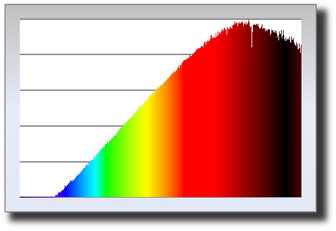
|
| Mineral: | spot 2700°K |
| Description: |
|
| Viewed: |
30967 Time(s) |
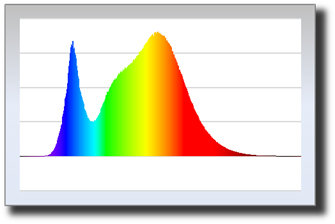
|
| Mineral: | Spot 4000 °K |
| Description: |
|
| Viewed: |
30940 Time(s) |
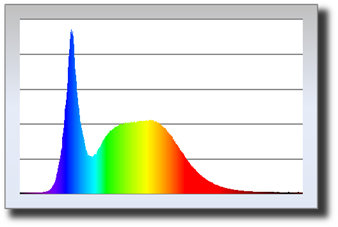
|
|
|
| Back to top |
|
 |
rernst
Joined: 15 Apr 2019
Posts: 5
Location: Greenbelt MD


|
 Posted: Jan 13, 2020 15:58 Post subject: Re: Display cabinets Posted: Jan 13, 2020 15:58 Post subject: Re: Display cabinets |
|
|
I've done a fair amount of museum lighting in my career. What I ended up with at home is relative to your project. Where we are, barrister bookcases can still be had a auction for a reasonable amount so I refinished one and outfitted it with LED strip lighting.
In line with what SteveB has said. With any design you do have to weigh your priorities and objectives and figure out what will satisfy them. Any case design has a number of factors to consider and involves lighting, security, access, aesthetics and cost. In small artifact cases getting small spots that work well will cost quite a bit of money. LED lights have come a long way since they first hit the market, in the US many of the major museums have done away with the halogen lamps that used to be standard. You can explore fiber optic lighting as well but it has it's design problems, all fibers go back to one illuminator.
In my cases the light source is as close to the front of the case as possible. I used a color temperature close to 4000K because that's what works for me. Do go for the best color rendering index you can get. I have enough LED's per inch that I can use a dimmer to adjust down if I want. I failed to use enough LED's on my first attempt and got so so results. I'm adding some photos of the case for your reference. The strip lighting gets hidden behind the door molding but a small valance is all that is needed. If you want help I can follow up with you.
| Description: |
| Overall look at the case. |
|
| Viewed: |
30983 Time(s) |
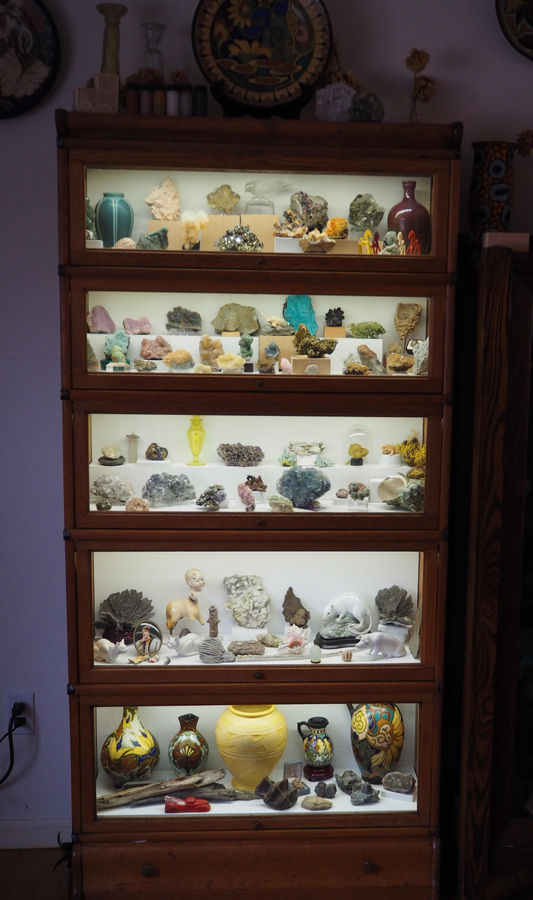
|
| Description: |
|
| Viewed: |
30980 Time(s) |
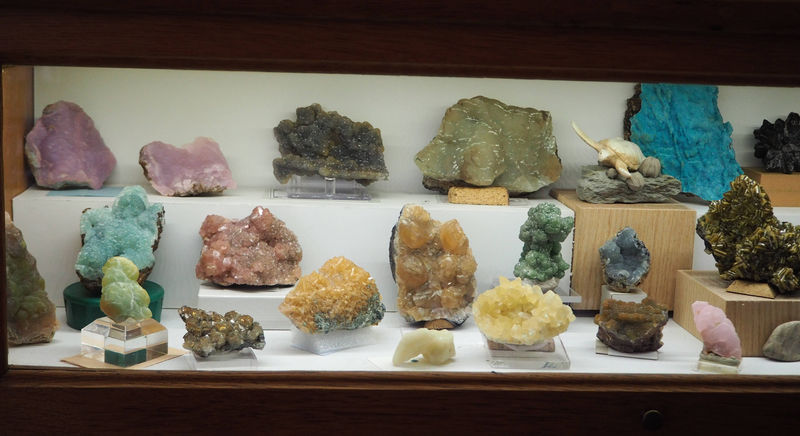
|
|
|
| Back to top |
|
 |
Tobi
Site Admin
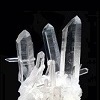
Joined: 07 Apr 2009
Posts: 4248
Location: Germany



|
 Posted: Jan 14, 2020 02:28 Post subject: Re: Display cabinets Posted: Jan 14, 2020 02:28 Post subject: Re: Display cabinets |
|
|
Hi Rernst,
your cabinets look great, very professional and highly aesthetic!
Tobi
|
|
| Back to top |
|
 |
James Catmur
Site Admin

Joined: 14 Sep 2006
Posts: 1470
Location: Cambridge



|
 Posted: Jan 14, 2020 07:54 Post subject: Re: Display cabinets Posted: Jan 14, 2020 07:54 Post subject: Re: Display cabinets |
|
|
I also use these in my cabinets and they work well for me
| Roy Starkey wrote: | Hi Everyone
I fitted 'White' 5000K LED strips under the shelves of my display cabinets a few years ago and have been very pleased with them. The product I used was sourced from the late Paul Lowe in the UK and is manufactured (or was manufactured) by Self Electronics see:
http://www.self-electronics.com/uploads/LINCUS-L4-24V-BC%E8%AF%B4%E6%98%8E%E4%B9%A6.pdf
(link normalized by FMF)
The illumination is bright and gives excellent colour rendering of fluorite and everything else in my collection. Unfortunately it looks as if the product is now discontinued but it may be worth contacting Self and asking if they have a current equivalent.
Roy
| Jesse Fisher wrote: | My experience with LED lighting and minerals is that, no matter what the nominal "color temperature" of the particular LED, some minerals just do not react well to them. Fluorite is a notable example (along with dioptase, azurite, and a few others), especially the ones that are highly fluorescent, such as those from Northern England. My understanding is that this problem has to do with the fact that most LEDs, unlike incandescent lighting, do not emit a continuous spectrum, but tend to have a gap in the green region. Combining LEDs of different color temperatures does not seem to solve the problem.
Peter Megaw has spent some time looking into this for his own displays, and tells me that he has located someone who has developed an LED that solves this. I am not sure whether they are available on a commercial basis, however. Perhaps he can chime in on the issue. |
|
|
|
| Back to top |
|
 |
alfredo
Site Admin

Joined: 30 Jan 2008
Posts: 1012



|
 Posted: Jan 14, 2020 08:51 Post subject: Re: Display cabinets Posted: Jan 14, 2020 08:51 Post subject: Re: Display cabinets |
|
|
| I seem to have a lot of minerals with a green or blue-green color due to iron, for example ludlamite, boracite, and many others. Those minerals seem to look their best under daylight or halogen lights (which are the closest approximation to daylight of all the artificial light sources, as far as completeness of the spectrum goes). Unfortunately halogen lights put out a lot of heat, and so fell out of favor. But none of the other artificial light sources come close to duplicating halogen‘s spectrum, so my ludlamites and boracites look greyish and washed out. Greens due to chromium on the other hand look brilliant, so jewelers are happy with the way their emeralds look in the showcases. I guess showing emeralds at their best is commercially more important than showing ludlamite at its best, ha ha. But anyway, pay less attention to the "color temperature" of a light source, which basically only tells you how much blue is in the light and says nothing about how complete the spectrum is. I‘m patiently waiting for an LED that duplicates halogens or sunlight before investing a lot of money in deficient current light sources that will probably be outdated by new technology a year or two from now.
|
|
| Back to top |
|
 |
Bergur_E_Sigurdarson

Joined: 21 Dec 2017
Posts: 148
Location: Paipa, Colombia



|
 Posted: Jan 14, 2020 09:42 Post subject: Re: Display cabinets Posted: Jan 14, 2020 09:42 Post subject: Re: Display cabinets |
|
|
Great input from everyone :-)
Tho still no word on any maker of the small LED-spots
...I guess that even tho the dealers use them collectors tend not to?
Perhaps since as mentioned they lack so much in completeness of spectrum and thus many minerals don't show their best.
I, like Alfredo, hope LEDs will beome better at replicating the full spectrum and given the development of tech I fully expect there to be work being done on that.
Seeing the graphs of a couple of LEDs, it unfortunately makes my idea of combining mroe than one type to compensate probably not a very functional one (even tho I've noticed this being done on phone "flash"-LEDs to try and achieve that)
I'm working on my setup in Colombia, so both emeralds and other chromium affected minerals are quite prominent in my collection, so maybe it wont suffer too much.
Again, thanks ... hope to see more info as more see the thread and maybe it will live on long enough to see new tech come forth :-D
|
|
| Back to top |
|
 |
|





